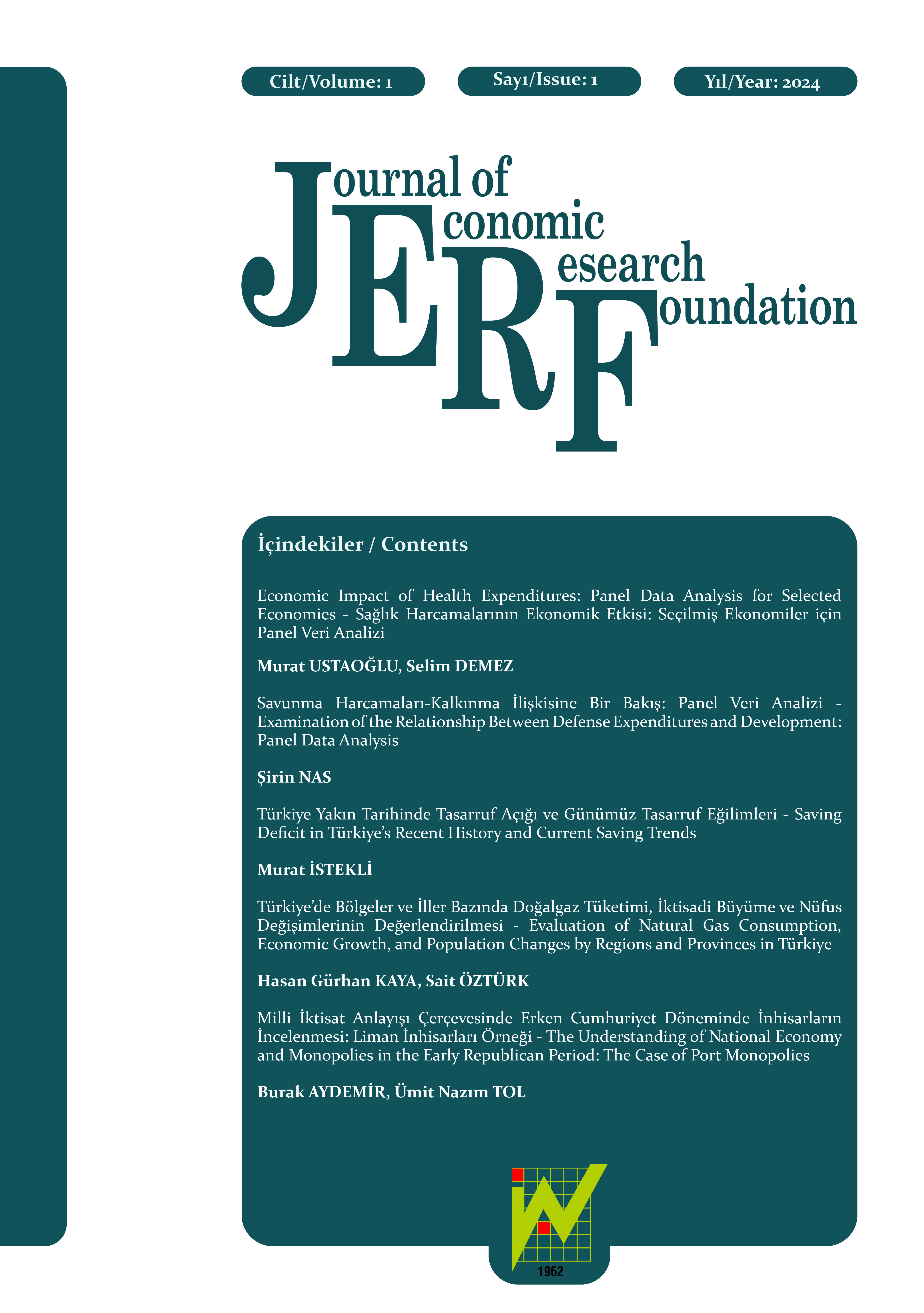Savings Gap in Türkiye's Recent History and Current Saving Trends
DOI:
https://doi.org/10.62844/jerf.11Keywords:
Savings, Investment, Savings Gap, Economic Stability, TürkiyeAbstract
In this study, the savings gap problem, which is one of the most important problems in Türkiye's recent history, and today's savings trends are examined. Since the end of the 1980s, Türkiye has been faced with the problem of savings gap intensely. This problem caused economic instability and negatively affected growth. In this way, the causes and effects of the savings gap problem are also discussed in this study. The main and most important reasons for the savings gap are the inability to achieve price stability and inadequate savings policies. The current account deficit, on the other hand, stands out among the effects of the savings deficit. To solve the savings gap problem and therefore other problems it causes; the authorities should implement policies that encourage savings and raise awareness to increase the savings habits of the public. The most important element of capital accumulation, which is necessary for the development of society, is savings. As a result, the savings gap problem in Türkiye's recent history and current savings trends are important for economic stability and growth. This study also touches upon policy proposals for the solution of Türkiye's savings gap problem.
References
Attanasio, O.P., Picci, L., & Scorcu, A.E. (2000). Saving, growth, and investment: a macroeconomic analysis using a panel of countries. Review of Economics and Statistics, 82(2), 182-211.
Ceylan, S. (2018). Enflasyon-özel tasarruf ilişkisi: Türkiye örneği. Anadolu İktisat ve İşletme Dergisi, 2(1), 56-66
Çolak, Ö.F., & Öztürkler, H. (2012). Tasarrufun belirleyicileri: Küresel tasarruf eğiliminde değişim ve Türkiye’nin hanehalkı tasarruf eğiliminin analizi. Bankacılar Dergisi, 82, 3 44.
Ener, M., & Karanfil, M. (2015). Türkiye ekonomisinde tasarruf açığının orta gelir tuzağı üzerine etkisi. Eskişehir Osmangazi Üniversitesi İİBF Dergisi, 10(2), 31-46.
Eriksson, K., & Hermansson, C. (2014). Searching for new saving behavior theories: How relationships between banks’ customers and advisors affect household saving. International Journal of Bank Marketing, 32(4), 279-299.
Göçer, İ., Akın, T., & Alataş, S. (2016). The effects of saving-investment gap on economic growth in developing countries: A clustering and panel data analysis. Theoretical and Applied Economics, 2(607), 157-172.
Kepenek, Y., & Nurhan, Y. (2011). Türkiye Ekonomisi, Remzi Kitabevi, İstanbul.
Keynes, J.M. (1936). The General Theory of Employment, Interest and Money, Palgrave Macmillan.
Khoman, E., & Weale, M. (2006). The UK savings gap. National Institute Economic Review, No. 198.
Manisalı, E. (1980). İktisada Giriş, İstanbul Üniversitesi Yayınları, İstanbul.
Nikiforos, M. (2015). A nonbehavioral theory of saving. Working Paper, No. 844, Levy Economics Institute of Bard College, Annandale-on-Hudson, NY
Ohlin, B. (1937). Some notes of the Stockholm theory on savings and investments. Economic Journal.
Özlale, Ü., & Karakurt, A. (2012). Türkiye’de tasarruf açığının nedenleri ve kapatılması için politika önerileri. Bankacılar Dergisi, 83(2).
Özyurt, H. (2006). Para Teorisi ve Politikası, Derya Kitabevi, Trabzon.
Pavelescu, F.M. (2009). Savings-investments relationship in an open economy. Revista Romana de Economie, 28(2).
Pomerantz, O., & Weale, M. (2005). Are we saving enough? The macroeconomics of the savings gap. National Institute Economic Review, 191, 79–93.
Seyidoğlu, H. (2006). İktisat Biliminin Temelleri, Güzem Can Yayınları, İstanbul.
Turan, G., & Gjergji, O. (2014). What is the impact of savings on growth? The case of a small open economy (Albania). Mediterranean Journal of Social Sciences, 5(13), 360-368.
Yentürk, N., Ülengin, K.B., & Çimenoğlu, A. (2009). An analysis of the interaction among savings, investments, and growth in Turkey. Applied Economics, 41(6), 739-751.
Downloads
Published
How to Cite
Issue
Section
License
Copyright (c) 2024 Murat İSTEKLİ

This work is licensed under a Creative Commons Attribution 4.0 International License.



